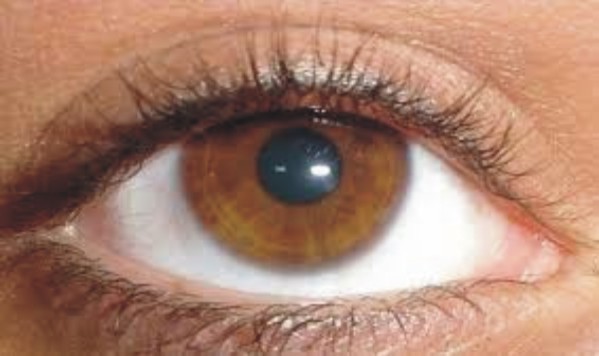
Today, Thursday 10th October, 2013, is World Sight Day. It is a day set aside to focus global attention on blindness, visual impairment and the rehabilitation of the visually impaired. It is a day that is dedicated to pledging good vision for every individual on earth. It is an event that receives attention every year.
World Sight Day, which is celebrated annually on the second Thursday of the month of October, is an event that focuses on the problem of global blindness with the aim of raising public awareness around the world about the prevention and treatment of loss of vision.
The World Sight Day is organized under the Vision2020 global initiative. VISION 2020: The Right to Sight” is a global initiative, launched in 1999, which aims to eliminate avoidable blindness by the year 2020. VISION 2020 programmes have been adopted in more than 40 countries of which Nigeria is not an exception.
Some of the principal reasons for which the world sight day is celebrated annually include;
Creating awareness about blindness and vision impairment issues which are considered to be of international public health concerns.
Motivating Health Ministers and other government officials to understand the
problems and take keen interest in listing viable solutions and allocating resources to fight to a standstill, the menace of visual impairment and blindness.
Raising awareness and educating people about issues related to vision impairment, the importance of a good vision, the corrective steps to be taken in order to restore partially lost sight and most importantly, the need for a regular eye examination.
After two years without any global theme, this year, International Agency for the Prevention of Blindness (IAPB) has decided on popular demand to revisit the global theme idea. 2013 is an important year, as it will mark the launch of a new WHO Action Plan on the prevention of avoidable blindness and visual impairment, 2014-19.
In keeping with the main thrust of this new Action Plan, the theme for World Sight Day 2013 is: ‘UNIVERSAL EYE HEALTH’. From the theme, a ‘Call to Action’ was carefully developed, this is: ‘Get your Eyes Tested’.
The call to action recognises a vital aspect of a successful and sustainable eye health network – an informed and regular end-user base which accesses eye care services at different points, based on need, age and other such factors. An eye test is first point of contact and the first step for diagnosis and treatment for practically every eye condition. So urging end-users to get their eyes tested should be a powerful call to action that can be incorporated into a variety of focal areas; be it refractive errors, diabetic retinopathy, cataract, glaucoma etc.
Statistics related to World Sight Day:
According to the recent World Health Organization (WHO) report, 80% of 45 million blind people worldwide are over 50 years of age.
A majority of the blind people, about 90%, live in nations where access to eye care is restricted.
Out of the eye care services that are administered worldwide, it is known that women and girls receive barely 35% of the care while men and boys receive well over 64%.
Women and girls make up over two thirds of the blind population worldwide.
80% of the world’s blindness can be avoided.
Some of the diseases that receive attention during world sight day
include:
Cataract
Trachoma
Refractive error
Low vision
Glaucoma
Diabetic Retinopathy
The Need for A Regular Eye Check up
Eyesight is one of the most important and valued senses we have. Clear vision involves a complex and intricate process of gathering, focusing and translating light into images. As we get older, the eye and its sensitive mechanisms are susceptible to damage and disease. Being alert to changes in vision is important in picking up eye diseases.
Some eye diseases such as glaucoma and diabetic retinopathy have no symptoms in their early stages, so you may not know you have a problem till the disease is in its later stage. This can make treatment more difficult and the problem harder to manage. Thus, regular eye examinations are essential for early diagnosis and treatment of any problem that may crop up. Early detection and treatment can slow down or even reverse the progression of eye diseases.
Prevention and treatment of vision loss are among the most cost-effective and successful of all health interventions. These interventions include: Cataract surgery; prevention of Trachoma; provision of the drug Ivermectin’ for the treatment of Onchocerciasis (River blindness); immunization against Measles; provision of Vitamin A supplements for the prevention of childhood blindness; and provision of Eyeglasses where necessary.
As we mark this year’s world sight day, there is need for partners working together under VISION 2020 to make a long lasting impact in the lives of people who are visually impaired through the provision of manpower and funds with a view to reaching out and delivering quality eye care to them. According to Dr. Harlem Brundtland, Director-General, World Health Organization (WHO); “Preserving or restoring vision can be accomplished at little cost and can help lift people out of poverty. They can then contribute fully to their families, communities and national development. Eye care, therefore, needs to be a priority and not just an issue for health ministries.”
Every five seconds, one person in the world goes blind whereas one child goes blind every minute. Let’s all work together to stop this ugly trend because, next to life is God’s most precious gift, – ‘Sight’.
Welcome!Log into your account










